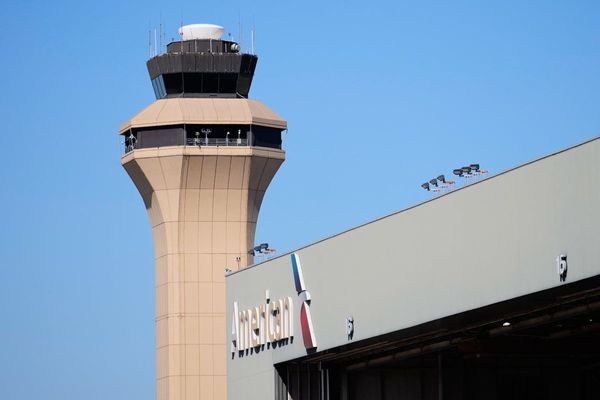
Dislodging the container vessel blocking the Suez Canal will take until at least Wednesday, a longer effort than initially feared that will amplify the disruption to global supply chains for everything from oil to grains to cars.
The extended halt to traffic through one of the world’s most important waterways is stretching a container-shipping industry that’s already operating at full capacity. It threatens costly delays for European companies that rely on a steady flow of Asian imports and for consumers who’ve grown fond of fast online purchases during the pandemic.
The task of re-floating the 200,000-ton ship called Ever Given, which is still firmly wedged across the vital maritime trade route, will require about a week of work and potentially longer, said people familiar with the matter, who asked not to be identified. Rescue efforts had initially been expected to last only a couple of days.
“The delays are likely to increase costs, adding to already widespread inflationary pressure on supply chains,” said Chris Rogers, lead trade analyst for S&P Global Market Intelligence’s Panjiva. “The short-term ripple effects will be an increased potential for stock-outs in consumer goods and the risk that just-in-time manufacturing supply chains that had already been roiled by Brexit and commodity shortages may face further interruptions.”
Even before the Ever Given ran aground in the Suez Canal on Tuesday, the global trade network was already showing signs of strain due to the year-long economic disruption of the coronavirus pandemic.
Read more: Why a Canal Built in 1869 Is More Important Than Ever: QuickTake
The world’s biggest flow of merchandise -- between China and the U.S –- has faced nearly five months of bottlenecks at the ports of Los Angeles and Long Beach. Importers have been waiting several weeks for arriving cargo, with the knock-on effect that exporters are unable to secure empty steel boxes needed to deliver their shipments abroad.
The fear now is that the Suez incident will exacerbate Europe’s logistical challenges, resulting in canceled sailings, container shortages and higher freight rates.
Work since Tuesday by tugs and diggers has so far been unsuccessful. As the rescue teams toil away, the waiting queue of oceangoing carriers loaded with billions of dollars worth of oil and consumer goods has risen to more than 300 from 186 on Wednesday, according to Bloomberg data.
On Friday at the canal, it was a clear day and the line of tankers queuing up to get into the waterway was visible from the shore. People from the neighboring area came out to have a look at the 400-meter (1,300-foot) container ship, which dwarfed the palm trees along the shore and made the dredger behind it look like a toy.
Should cargo need to be unloaded from the stranded vessel, or extensive repairs made to the canal itself, “then the downtime could certainly last at least two weeks,” according to Randy Giveans, senior vice president of Equity Research for Energy Maritime at Jefferies LLC. The Ever Given could hold almost $1 billion of goods, according to IHS Markit Ltd.
Vessels that had been scheduled to traverse the Suez Canal are beginning costly and time-consuming detours around Africa as the shipping sector scrambles to keep deliveries moving. South Korea’s HMM Co. instructed a container ship that departed the U.K. on Monday to divert around the Cape of Good Hope to avoid the gridlock. At least seven liquefied natural gas vessels have had routes adjusted away from the canal, according to Kpler analyst Rebecca Chia, and major shippers including A.P. Moller-Maersk A/S and Hapag-Lloyd AG are also studying detours.
Shipping costs are also surging -- the price to ship a 40-foot container from China to Europe has almost quadrupled from a year ago -- adding a new burden to global supply chains already reeling from a pandemic that has sowed havoc with shortages and delays.
The canal blockage is currently holding up about 2 million barrels a day of oil flows, according to Braemar estimates, and snarling bulk carriers that ship products from wheat to iron ore. Global manufacturers are already preparing for delays to both the shipment of finished goods, and materials that are crucial to their production lines.
A list of cargo aboard a HMM Co. vessel waiting outside the canal to return to Asia gives an indication of the sweep of industries caught up in the disruption, with goods on board including wood, machinery, frozen beef, paper, powdered milk, furniture, beer, frozen pork, auto components, chocolate, and cosmetics.
Caterpillar Inc., the largest U.S. machinery producer, said it is facing shipment delays and even considering airlifting products if necessary, while Japan’s Envision AESC, a supplier of electric vehicle batteries, said it relies on the Suez Canal for some imports of electrodes.
Swedish furniture giant Ikea confirmed there are containers with its products on ships that are waiting to make passage. “Depending on how this work proceeds and how long it takes to finish the operation, it may create constraints on our supply chain,” a spokesman for Inter Ikea Systems, the franchisor of the Ikea brand, told Bloomberg.
Mark Ma, owner of Seabay International Freight Forwarding Ltd., a company in Shenzhen that handles Chinese goods including toys, pillows and mattresses sold on platforms such as Amazon.com Inc., said his company has 20 to 30 containers on the ships waiting to cross the blocked canal.
“If it can’t be resumed in a week, it will be horrible,” said Ma. “We will see freight fares spike again. The products are delayed, containers can’t return to China and we can’t deliver more goods.”
Vessels currently outside of the Red Sea planning to use the Suez Canal will need to decide whether to reroute around Africa, adding 10 to 15 days to their voyages, according to Giveans. Ships queuing on either end of the Suez Canal area are likely to wait to determine how long the passage will be closed before taking a decision to divert, he said.
For the container lines that haul about 80% of global merchandise trade, a prolonged bottleneck between Europe and Asia risks throwing off ship schedules set months in advance so importers can plan their purchases, manage inventories and keep store shelves stocked or production lines running.
The problem compounds with every day container ships have to wait. Vessels that arrive several days late can’t be emptied and reloaded in time to make the scheduled return journey. That leads carriers to cancel trips -- further constraining capacity and pushing up freight rates.
The logistical challenges could continue even after the canal is unblocked.
“European terminals will be hit by a surge of container volume that will temporarily overwhelm their handling capacity,” said Greg Knowler, senior European editor at JOC, which is part of IHS Markit. “Rotterdam and Antwerp expect ship-wait times to lengthen, and expect it will take longer to handle ships and clear containers from the yards, and businesses will have to wait longer for their imports.”
The prospect of a blockage as long as a week boosted European natural gas prices, as cargoes laden with the liquefied form of the fuel destined for the region face delays.
The oil tanker Marlin Santorini, capable of carrying 1 million barrels, switched destinations away from the Suez Canal, according to tanker tracking data compiled by Bloomberg. Rerouting around South Africa’s Cape of Good Hope would add 6,000 miles to the journey and something like $300,000 in fuel costs.
What a Long Suez Closure Means for the Oil Price: Julian Lee
A lengthy closure of Suez could mean limited availability of some foodstuffs, supply delays and higher prices.
“There are lots of compounding issues. The global food system is already under pressure from Covid,” Tim Benton, research director in emerging risks at Chatham House in London and a food security expert, said in an interview. The trade disruption “adds a further straw to the camel’s back.”
©2021 Bloomberg L.P.







